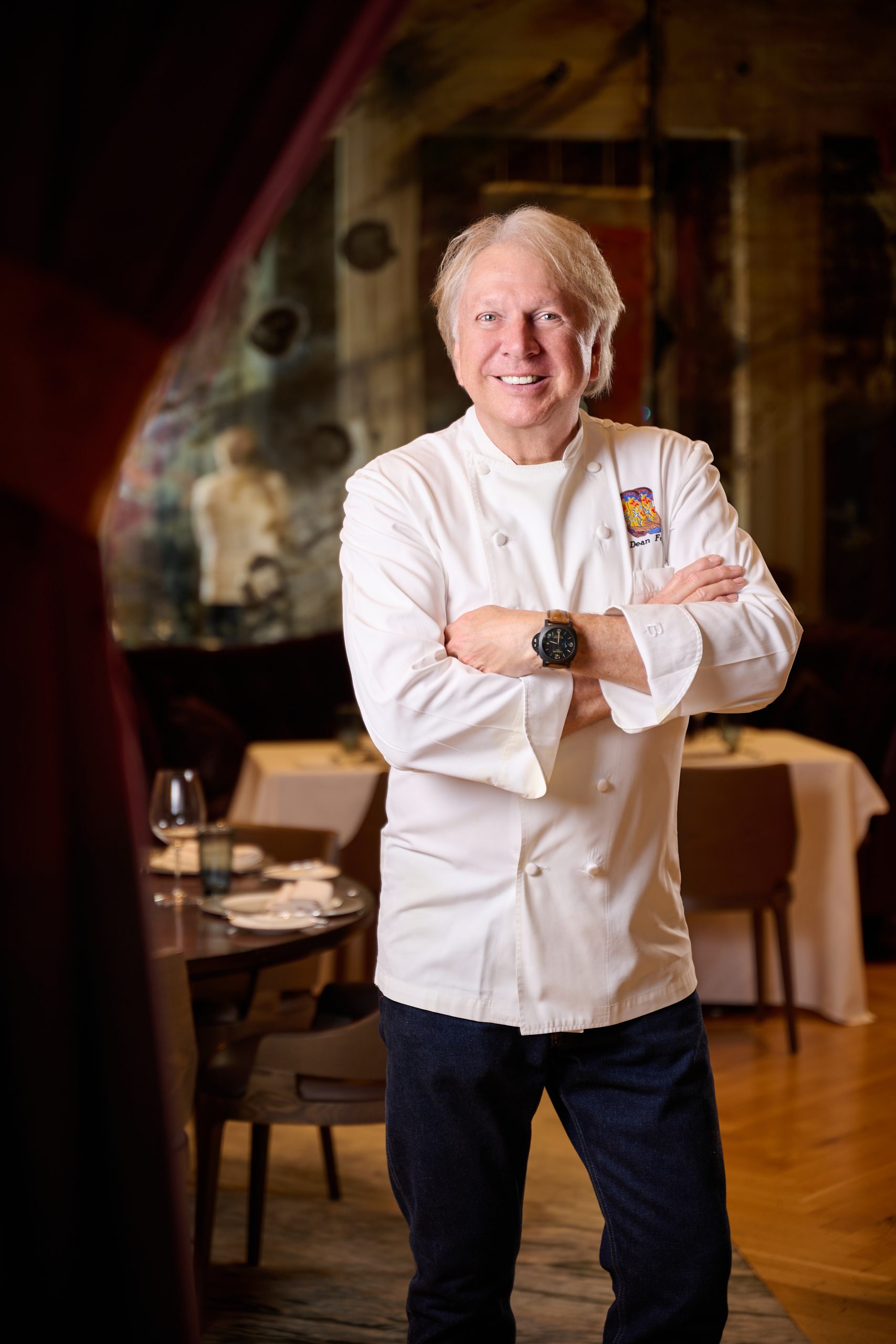 Photo Credit: Alison McLean
Photo Credit: Alison McLean
OFTEN CALLED THE “FATHER OF SOUTHWESTERN CUISINE,” Dean Fearing has spent his life doing what he loves most: cooking for people who love food. A Kentucky native and the son of an innkeeper, Dean grew up surrounded by grandmothers who knew the magic of Southern cooking and the slow perfection of barbecue. Their recipes still live in his kitchen — some in their pure form, others reinvented with a modern twist in his book, The Texas Food Bible.
After graduating from the Culinary Institute of America and spending more than two decades at The Mansion on Turtle Creek, Dean opened Fearing’s at The Ritz-Carlton, Dallas in 2007. The restaurant quickly became a destination in its own right, earning national acclaim. The CIA named him a “Pioneer of American Cuisine,” and Food Arts honored him with its Silver Spoon Award.
But Fearing’s signature style isn’t just on the plate — most days you’ll find him in the dining room, white chef’s coat crisp and pressed, blue jeans perfectly worn-in, and Lucchese cowboy boots custom-tooled with vibrant designs. And when he’s not in the kitchen, he’s likely strumming his vintage Fender Telecaster with his all-chef alt-country band, The Barbwires, or crisscrossing Texas in search of inspiration — be it Hill Country wild game, Gulf seafood, farmers’ market peppers, or sun-ripened tomatillos. His menu changes often, but his mission never does, and that is to celebrate the bold flavors and generous spirit of Texas.
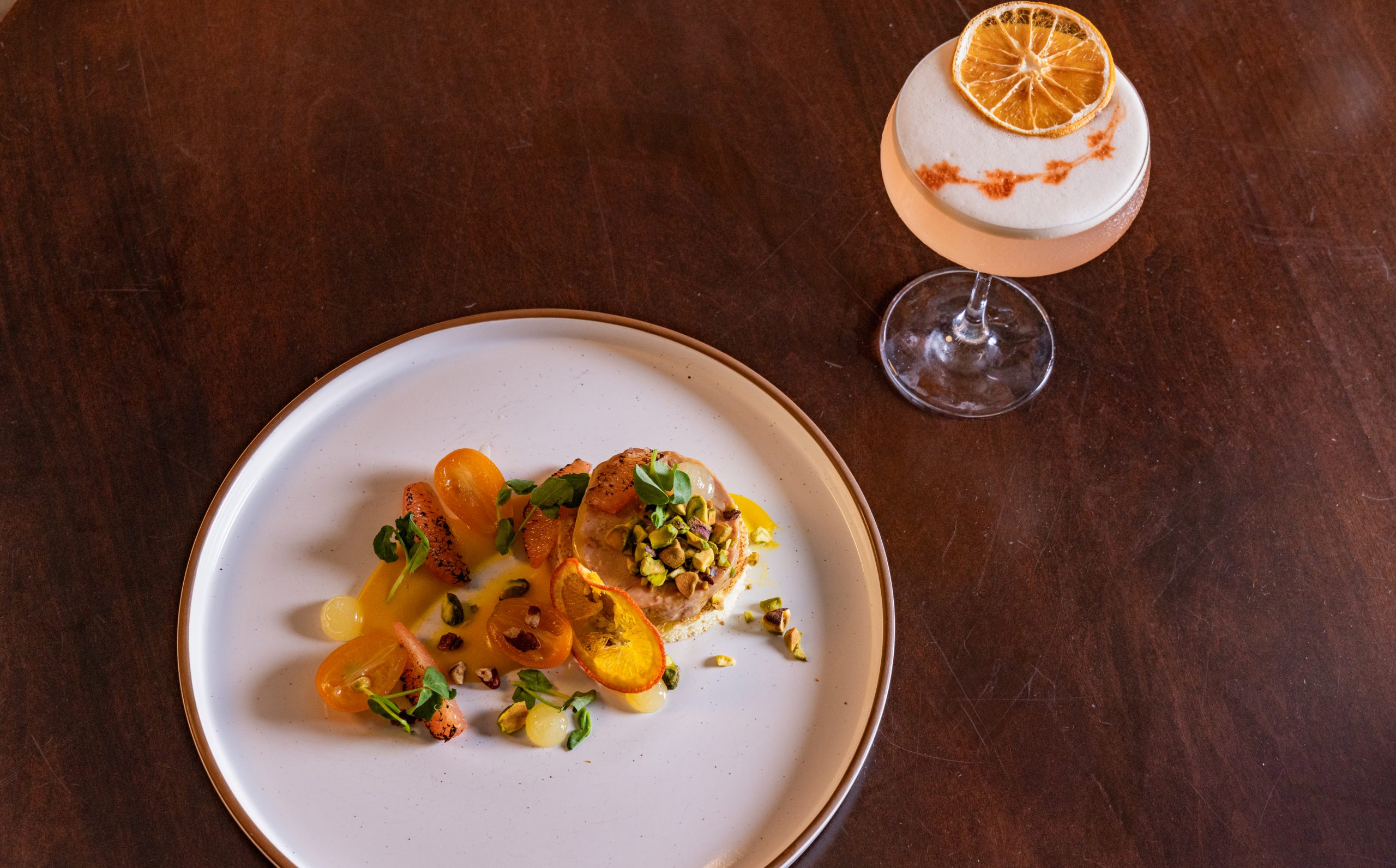 Photo Credit: Fearing’s
Photo Credit: Fearing’s
What’s the earliest food memory that still sticks with you today?
It would have to be the holidays. I grew up in Ashland, Kentucky, where Ohio, West Virginia, and Kentucky meet at the Ohio River — a river town. My strongest memory is my grandmother’s Thanksgiving dinner. Walking into her house with my older brother and younger sister, you’d immediately smell the turkey, all the side dishes, pecan pie, pumpkin pie, and the relish tray with seasonal fruits and vegetables. About 20 people would gather. “Ma,” as we called her, cooked everything herself: country ham, turkey, dressing, whipped and mashed sweet potatoes, all the sides. I was lucky — my other grandmother, just four blocks away, was also an excellent cook. I grew up surrounded by Eastern Kentucky country cooks; my dad ran the Henry Clay Hotel, a red-brick landmark on Winchester Avenue with a coffee shop and fine-dining restaurant. I can still picture the Sunday buffets at the Blue Room, with the chef carving steamship round roast beef and mashed potatoes seasoned with white pepper — an Eastern Kentucky signature. Those flavors are still ingrained in me.
It feels like destiny. You were surrounded by amazing food, and you put Southwestern fine dining on the map. How did that happen?
It started with my dad, chefs, and Holiday Inns. After we left Kentucky, my dad joined Kemmons Wilson, founder of the Holiday Inn chain, in the ’60s — which is how I got into kitchens. In junior high, my dad put my brother and I to work at Holidays Inns after school and at night. It taught us independence; we could buy what we wanted without asking our parents. I also was lucky enough to train with great chefs including Harvey Colgin, a retired Hilton chef who had apprenticed under Auguste Escoffier in the 1920s at The Ritz in London. He mentored me for two years, and I helped him open a restaurant in Louisville. He later got me into the Culinary Institute in 1976.
After graduating, I worked at The Maisonette in Cincinnati, the country’s oldest Mobil five-star restaurant. A year-and-a-half later, chef George Hayden told me about the Fairmont Hotel in Dallas. I’d never been to Texas, but I fell in love with Dallas. In 1980, I became the saucier at The Mansion on Turtle Creek and then moved up to executive sous-chef.
In ’81, I opened Dallas’s first true American restaurant, Agnew’s, at a time when fine dining was dominated by French cuisine. Everyone predicted I’d fail, but six weeks later, we had five stars from both the morning and evening papers. I was 26. After four great years, the 1984 recession closed it. At the same time I was opening Agnew’s, The Mansion on Turtle Creek was launching Southwestern cuisine. The owner, Carolyn Hunt — a Texas oil baroness — brought in a tortilla soup recipe from San Antonio, saying we needed something local, but which [the French chefs] called “peasant soup.” It became the most famous soup in Texas.
In 1985, inspired by chefs Larry Forgione, Wolfgang Puck, and Alice Waters, I pushed to make The Mansion on Turtle Creek — which is now owned by Rosewood —fully Southwestern. Rosewood’s president, Bob Zimmer, was hesitant, but I told him, “We market it just like the local cuisine Wolfgang and Larry are doing. We announce it’s a new cuisine.” The next day, he agreed. We built it on Texas ingredients — Gulf fish, South Texas wild game, West Texas steaks, Cajun and Southern flavors, and Mexican staples like chiles, cilantro, limes, and mangoes. Using [items] like enchiladas and Spanish rice, other Texas chefs including Stephan Pyles, Robert Del Grande, and I created a new Texas cuisine.
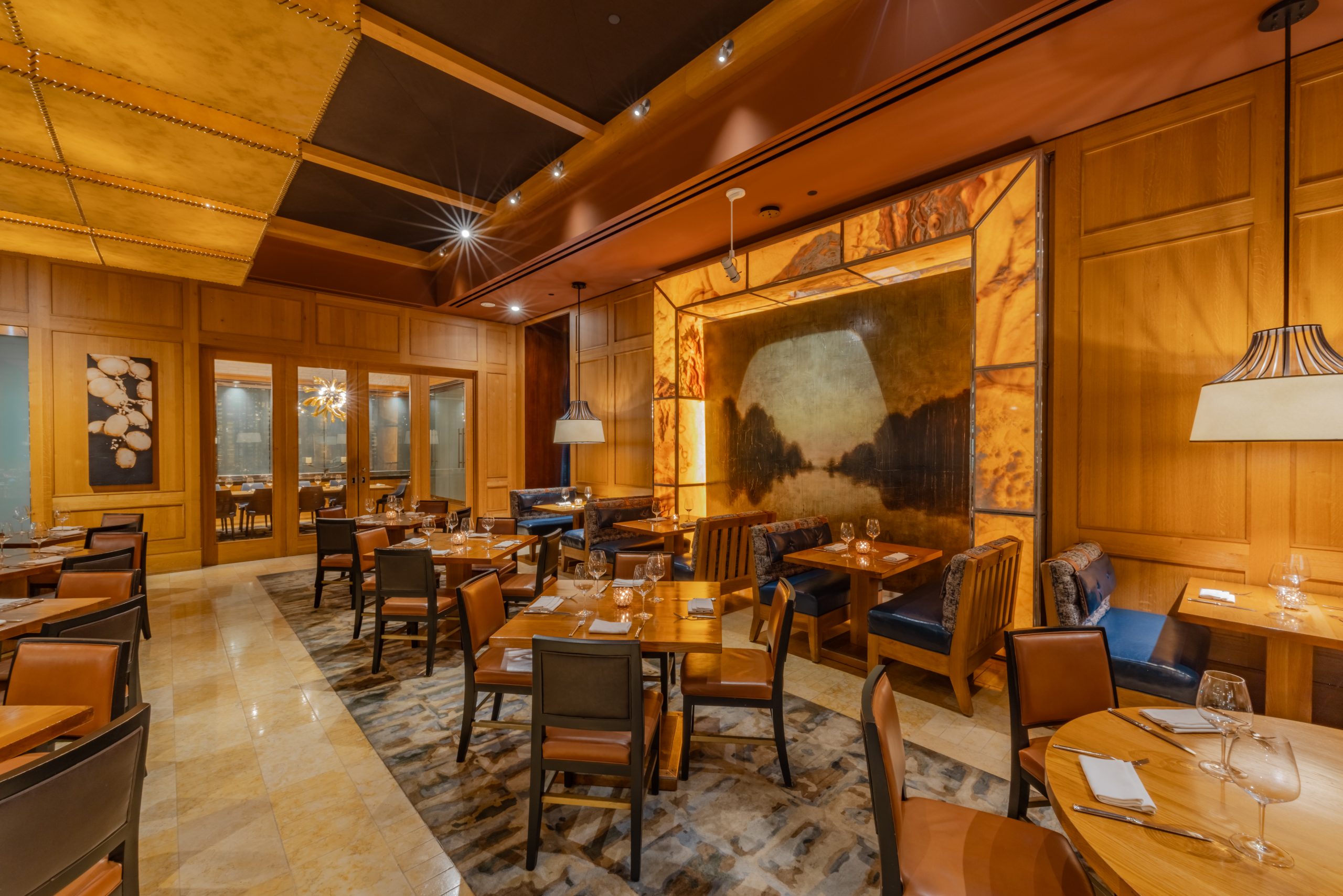 Photo Credit: Fearing’s
Photo Credit: Fearing’s
What is a signature dish of yours that continues to attract interest?
The tortilla soup, which I’ve been preparing since 1981. We’ve given it new life over the years, and the current version is the best: more how we’d eat it in the back of the kitchen — true Mexican. It has cabbage, radish, jalapeño, avocado, smoked elements, cilantro crema, tortilla chips, and sharp cheddar for a bite. The other is the lobster taco I created in 1985 to launch Southwestern cuisine at The Mansion on Turtle Creek: lobster with yellow tomato salsa and jicama-carrot salad on top.
Your whole Southwestern style goes beyond the kitchen. I hear you still wear your cowboy boots when you’re cooking. Is that right?
Most of the time. The tennis shoes are a lot more comfortable now, but all through my career, Lucchese boots have been the star for me. I have probably over 50 pairs of Lucchese boots — all different looks and colors.
Is that your signature style outside of the kitchen and inside now, too?
It is. I love cowboy boots because they’re the last form of Texas art. In the true sense, you don’t see a lot of the upper shaft of the boot because we cover it with our pants, but the artwork that is done on boots, back then and nowadays, is amazing. It’s all hand-tooled, hand-sewn, hand-cut. Putting these boots together is a 676-step process.
What about hats?
I’m not a hat guy — never was. I was never a culinary hat guy either. I didn’t like hats and still don’t. I’ll wear a cowboy hat at the appropriate party, though. At the Cattle Baron’s Ball, you’ve got to wear a cowboy hat.
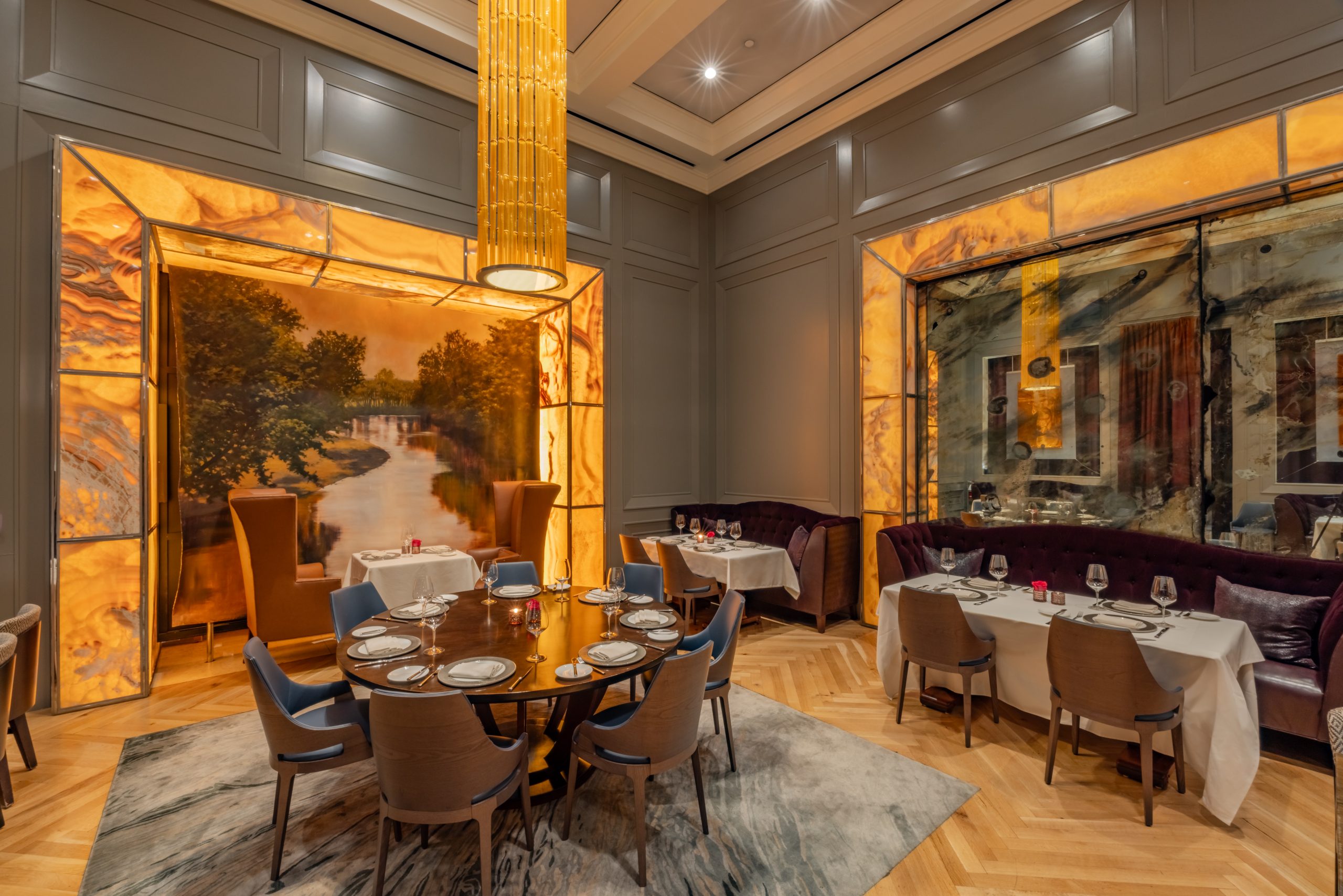 Photo Credit: Fearing’s
Photo Credit: Fearing’s
Now that sounds like a party.
Three thousand people; Brooks & Dunn, Garth Brooks, and Trisha Yearwood have performed over the years. It is the party.
Are you performing too? Because I understand you might be making a little bit of music on the side.
In fact, I just got my new Martin guitar before we started talking. Give me something to collect, and I’ll collect it. I’ve got a guitar collection, a boot collection, a watch collection — I love it all.
My last question for you is: what to you is the greatest luxury in life, and why?
My greatest luxury in life right now — besides my wife — is slowing down and having free time. I came from a world where it was always go, go, go. Now, I find that having free time is unbelievable; it’s the best. My wife still works the grind, though. She leaves in the morning and says, “Well, have a great day.” I try not to rub it in too much, but I do have her dinner ready for when she gets home — and that’s a luxury for her.
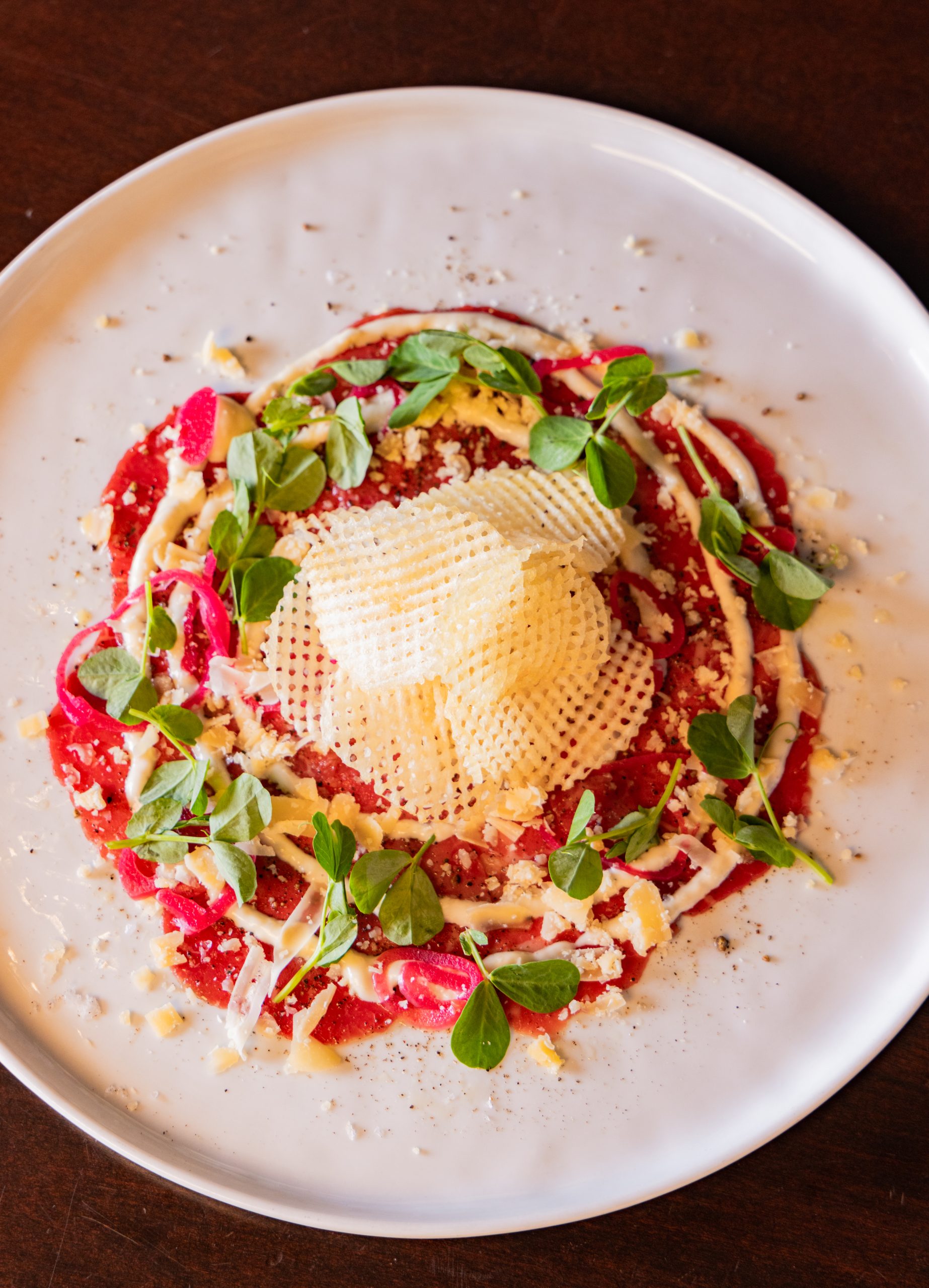 Photo Credit: Fearing’s
Photo Credit: Fearing’s


Dining and Cooking